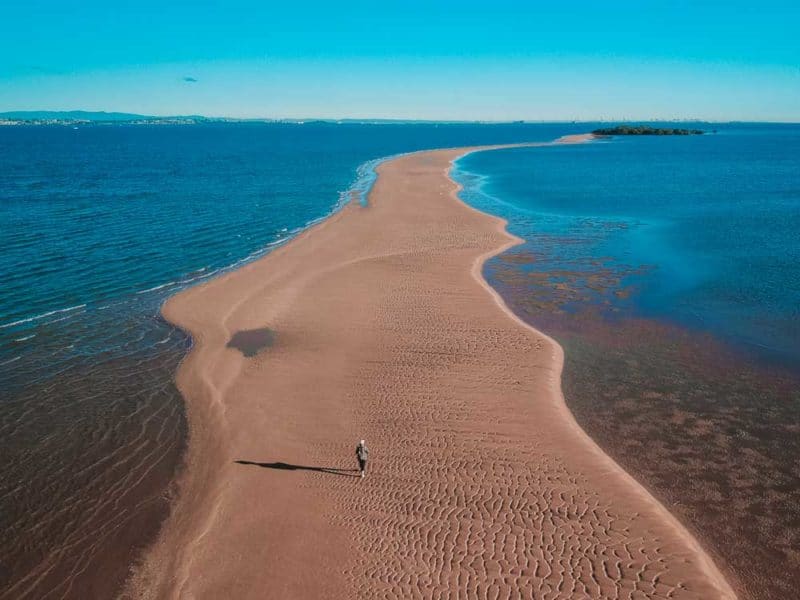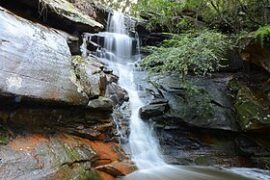An Essential Guide to Tides at Wellington Point for Parents
Oh, what a joy it is to spend a day at Wellington Point with the family! It’s the perfect outdoor classroom where the little ones can explore, learn, and have a blast. But, savvy parent, are you tide-wise? Understanding the tides at Wellington Point is not just fun science – it’s essential for safety and making the most of your visit. So, let’s dive into the ebb and flow of Wellington Point’s tides and ensure your family’s adventure is as safe as it is exciting!
Why Tides Matter at Wellington Point
First things first, dear parents. The tides at Wellington Point can make or break your seaside jaunt. High tide? The swimming is splendid! Low tide? It’s time for treasure hunting on the exposed sandbars. Wellington Point is a treasure trove of activities, all dictated by the rhythmic movements of the sea.
Understanding Tidal Movements
Before we get our feet wet, here’s a bit of tidal talk to impress your kids with. Tides are the rise and fall of sea levels caused by the gravitational pull of the moon and the sun. In Wellington Point, just as in most coastal areas, you’ll experience two high tides and two low tides each day. Knowing when these occur is like holding the key to a secret garden – it unlocks the best times for various activities.
Checking the Tides Before You Head Out
Alright, proactive parents, checking the tides is a cinch. There are several reliable sources online where you can find the tide schedule for Wellington Point. Bookmark them on your browser or download a tide app on your smartphone. A pro tip: look for local tide charts, as they are tailored for Wellington Point’s unique coastal behaviors.
Fun and Safety at High Tide
When the tide is high, the water’s nigh! This is the time for you and your kiddos to take a dip in the warm waters or perhaps try your hand at a spot of paddle boarding or kayaking. The jetty at Wellington Point becomes a hub of activity, and it’s mesmerizing to watch the boats bobbing on the water.
But wait, dear parents, safety first! Always keep a watchful eye on your little ones, as deeper waters require diligent supervision. And remember, even though the tides are predictable, the sea is still a powerful force. Stay within designated swimming areas and heed any warnings from local lifeguards.
Discoveries Await at Low Tide
Low tide at Wellington Point is like the curtain rising on a different stage. It’s time to get those buckets and spades because nature’s playground is wide open! The water recedes to reveal an expanse of sand and perhaps even the way to King Island – accessible by walking during the lowest tides.
This is an amazing opportunity for you to teach your children about marine life as they discover sea stars, crabs, and a myriad of shell treasures. Not only is it fun, but it’s also a hands-on biology lesson for curious young minds.
Yet again, we must wave the flag of caution. Ensure your family is prepared with appropriate footwear to protect against sharp shells and stones. Also, be aware of the time. You don’t want to be caught off guard by the incoming tide!
Conclusion
Navigating the tides at Wellington Point can seem a bit like mastering the art of timing – but with this guide, you are now equipped with the know-how to plan a fantastic outing. Whether it’s splashing in the waves at high tide or exploring the sandy bottom at low tide, make sure your family’s seaside adventures are both safe and memorable. Stay tide-wise, and happy exploring!
Stay tuned for more helpful tips on how to maximize your trip to Wellington Point with your family, including more safety advice, the best times for wildlife spotting, and the ultimate guide to the amenities and facilities available. Remember, an informed parent makes for the happiest memories by the sea!

5 Things Parents Should Know in Preparing for Tides at Wellington Point
1. Tide Times Affect Activity Options
Being clued-up about the tide times is pivotal for planning your activities. High tide means swimming and water sports are on the cards, while low tide offers up beachcombing, exploring sandbars and walking to King Island. Note the times and duration of both low and high tides to safely schedule your day’s adventures.
2. Safety Precautions During Changing Tides
It’s crucial to acknowledge the rapid changes in tides, especially when they transition from low to high. Always stay vigilant and keep children close, as shifting tides can alter water depths quickly. Also, set up your family’s play area a safe distance from the water’s edge to account for the incoming tide.
3. The Ideal Gear for Tide Exploration
The right attire can make all the difference! At low tide, ensure everyone wears sturdy, water-compatible shoes to protect feet from rough terrain and sharp objects. At high tide, consider life jackets for weaker swimmers, and don’t forget the sunscreen and hats – New Zealand sun can be quite fierce, even on overcast days.
4. Wildlife and Habitat Conservation Awareness
Low tide is a fantastic opportunity to observe marine life in their natural habitat. Encourage your children to look, not touch, to preserve the delicate balance of the ecosystem. It’s a great chance for a lesson in sustainability and respect for nature.
5. Timing Your Visit with the Tides
Remember, the tides wait for no one! Avoid getting stranded on sandbars or cut off from the mainland by keeping an eye on tide schedules. It’s important to begin your return journey well before the water starts to rise. Also, familiarize yourself with the escape routes and the location of higher ground in case of an unexpected turn in tide levels.
With these tips and your tide knowledge, each visit to Wellington Point can be a delightful and secure experience for the whole family. Embrace the natural beauty and the educational qualities of the seaside setting. Happy tide chasing, and enjoy the precious moments of wonder and excitement on the faces of your children as they engage with the world around them!
For more great fun click here. For more information see here
Disclaimer
The articles available via our website provide general information only and we strongly urge readers to exercise caution and conduct their own thorough research and fact-checking. The information presented should not be taken as absolute truth, and, to the maximum extent permitted by law, we will not be held liable for any inaccuracies or errors in the content. It is essential for individuals to independently verify and validate the information before making any decisions or taking any actions based on the articles.




